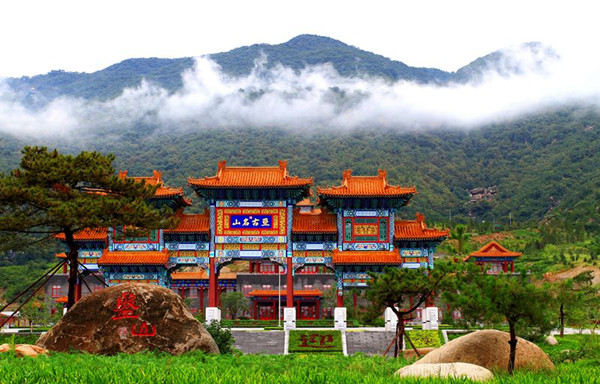
Panshan Mountain
Panshan Mountain, known as Panlong Mountain and Sizheng Mountain in ancient times, is located 12 kilometers northwest of Jizhou district, Tianjin. Panshan Mountain boasts beautiful natural landscape, including mountain peaks (Guayue Peak, Lianhua Peak, Zigai Peak, Wujian Peak, Zilai Peak), stones (Xuankong Stone, Yaodong Stone, Liangjia Stone, Tianjing Stone, Jiamu Stone, Jiangjun Stone, Hama Stone, and Mang Stone), and scenic spots of pine, stone, and water as well as a number of cultural landscapes. Panshan Mountain is listed as one of the top fifteen famous mountains in China, and enjoys the reputation as the first mountain east of Beijing.
Panshan Mountain has a long history of development. With the introduction of Buddhism into China, Panshan Mountain became the home of the Faxing Temple (now Shaolin Temple) and Kanhua Temple during the Wei (220-265) and Jin (265-420) dynasties; the Qianxiang Temple, Tiancheng Temple and Li Jing Nunnery in the Tang Dynasty (618-907); and the Yunzhao Temple, Baiyan Temple, Shuangfeng Temple, Tianxiang Temple and Huiyin Temple during the Liao (916-1125) and Jin (1115-1234) dynasties. Panshan Mountain reached its heyday during the Ming (1368-1644) and Qing (1644-1911) dynasties, boasting 72 temples and 13 exquisite pagodas. During the Qianlong period of the Qing Dynasty, the second-largest natural landscape royal garden "Jingji Mountain Villa" was built on the mountain, smaller only than the Chengde Mountain Resort. Fond of Panshan Mountain, Emperor Qianlong visited the mountain more than 30 times and wrote 1,366 poems about it.
In addition, Panshan Mountain also served as an anti-Japanese base during the War Against Japanese Aggression. The army and people of Panshan Mountain fought side by side, leaving a large number of revolutionary sites and anti-Japanese slogans.
A majority of the cultural relics of Panshan Mountain were destroyed by fire during the period of the Republic of China, leaving only the green mountain and beautiful scenery. In the 1980s, to develop tourism in Jizhou district, the Tianjin Municipal Government allocated huge sums of money to restore Tiancheng Temple, Wansong Temple and Yunzhao Temple, which are currently the mountain's main temple attractions.





